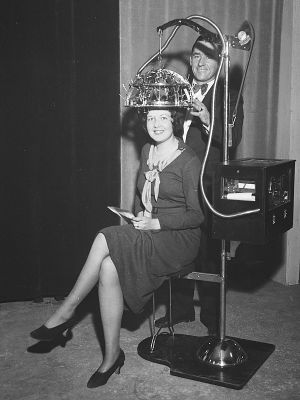Psycograph (phrenometer)
From Kook Science
- Not to be confused with the Psycograph spirit communication device.
The Psycograph (or psychograph) is an automated phrenological measuring device, developed by Henry C. Lavery (based on his earlier patented Lavery Electric Phrenometer, "perfected after twenty-six years of experiment")[1] and formerly sold through his Minnesota-based Psycograph Co. (or Phrenology Co., 1929-1937). The device operates by automatically taking measurements of several areas of the subject's head and producing a print-out record of the readings taken, specifically functioning as a "phrenometer for measuring the faculties of intelligence of the head, and hence determining the size and character of the brain contained therein," in particular "measur[ing] 32 relative areas of the brain, sort[ing], classif[ying] and indicat[ing] correctly 160 ratings of 32 different faculties, pointing out one's talents, abilities and weak and strong characteristics."[2]
Resources
- US 788362, Lavery, Henry C., "Anatomical Measuring and Recording Machine", published 1905-04-25
- Psycograph Advertising, karp.freeshell.org, https://web.archive.org/web/20141227203117/http://karp.freeshell.org:80/psycograph/ — [via archive.org]
References
- ↑ "Psychograph Installed in Theater Lobby", Los Angeles Times (Los Angeles, California): 19, 20 August 1932, https://www.newspapers.com/newspage/159613079/, retrieved 2018-01-12
- ↑ "MASTERMINDING THE SKULL", Hammond Times (Hammond, Indiana): 74, 11 December 1936, https://www.newspapers.com/newspage/54670287/, retrieved 2018-01-12
